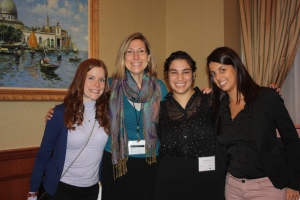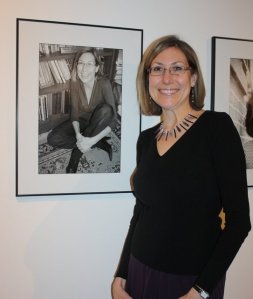Tags
Association for Women in Psychology, Charter Oak Cultural Center, CT Girlcott, Jennifer Nez Detendale, Malala Yousufzai, Nobel Peace Prize, Ouyporn Khaunkaew, Project Weightless, Time Magazine Person of the Year, Women for Change
Last week I flew back from Salt Lake City where I attended the annual conference of the Association for Women in Psychology. My students and I (seen above in the photo) presented our work on activism and social media (such as Girlcott, Project Weightless, the prevalence of “thinspiration” images on Pinterest, and advocacy for sex workers). I heard two phenomenal keynote addresses (Ouyporn Khaunkaew and Jennifer Nez Detendale), attended sessions on white women confronting our own privilege, the size acceptance caucus, an innovative program for incarcerated women, listened to research on body image and the sexualization of women and girls, and sexual identity. It was an invigorating few days. All the great feminist work and thought being done globally around women’s issues is always heartening to me.
One of criticisms regarding Girlcott or any movement to go makeup free is that, against these larger, “real” global women’s issues, it is trivial. What are we doing, really? I would like to address that. I wrote a little bit about this in the most recent artzine, Visions, that is published by the Charter Oak Cultural Center (Spring 2013 issue). I’ve updated it here.
“I don’t mind if I have to sit on the floor at school. All I want is an education. And I’m afraid of no-one.” – Malala Yousufzai
If you don’t recall her name, Malala Yousufzai is the 15 year old Pakistani girl who was shot in the neck and the head by the Taliban on October 9, 2012 while she was returning home on a school bus. She was targeted for assassination by the Taliban because she was an activist—she spoke out the right for girls to be educated. The editors of Time Magazine voted her as their runner-up for 2012’s Person of the Year. She is also the youngest person in history to be nominated for the Nobel Peace Prize.
I’ll never forget her name. I’ll never forget it partly because it is so close to mine and there is something heartening about that. I’ll never forget it because at age 15, I could never imagine being in her shoes or having her tenacity. I’ll never forget it because I am in awe of her courage.
I’ve been thinking a lot about courage lately. I teach courses on body image and feminism. A class on “body image” sounds fun, doesn’t it? It is. But, like many things, when you begin to dig under the surface, it’s complicated. Wow. Talk about courage. Young women’s bodies are under attack in ways they never have been before. Unlike Malala, women in my class have access to an education. For many of them, that education has been transformative for them…and me. I am a witness to intelligent young women’s journeys of all kinds of attacks to their bodies—both from themselves and others. Those attacks are both physical and emotional. They are far more courageous than they know.
In the spring of 2008, I had a particularly powerful, inspiring class (an honor’s seminar I teach called “Women, Weight, and Worry). My commitment to those young women was to begin a campus organization dedicated to the issues we shared and the bonds we formed with each other. Women for Change was born. We are an activist based organization regarding women’s bodies (e.g., weight issues, the representation of women in media, violence against women, sexuality). We need activists like Malala, like my students, like those members in Women for Change, like those who are part of CT Girlcott. For years, I have challenged the women in my classes to go a single day without makeup. For some, it’s not a big deal. For others, it’s excruciating. Some have even told me to take away their points for the assignment—they simply could not do it. To go for an entire month would be unheard of. For me, that says less about an individual woman than it does about the culture that makes her feel “less than” if she doesn’t wear it. It’s not about the makeup. Join us and know that letting yourself be seen can be an act of courage, vulnerability, and activism. If you think it isn’t, sign up for my class.




